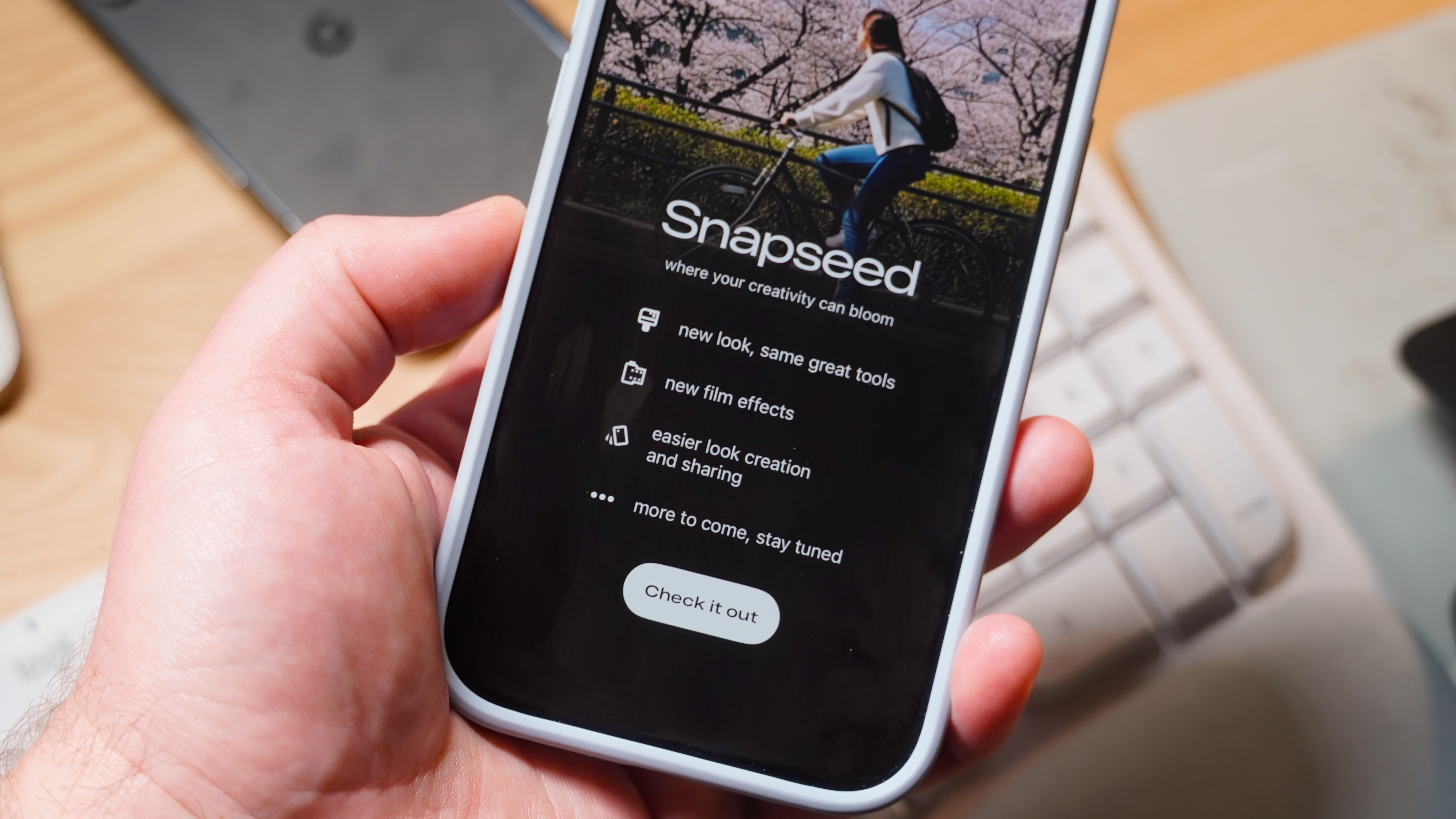Meta Quest Pro vs. Pico 4 Pro: Two dueling prosumer VR headsets
Called the Pico 4 Enterprise in some territories, the Pico 4 Pro costs less than the Meta Quest Pro but has some similar features.

Premium work-from-home device
The Meta Quest Pro gives you a major step up over other VR headsets on the strength of its mixed-reality tech, so you can work on real-life devices while augmenting them with virtual displays. Once it receives more productivity software from Meta's partners, it could become a reliable improvement to your daily workflow — if you can afford it.
Pros
- Snapdragon XR2+ with 12GB RAM
- Self-tracked Pro controllers
- Better MR technology
- Halo strap design more comfortable
- Software partners like Microsoft, Autodesk
Cons
- Only 2-hour battery life
- Heavier design
- Much more expensive

Premium specs for less
Named the Pico 4 Pro in China but marketed as an Enterprise device worldwide, this device is more of a premium VR device than a mixed-reality one, though it does have full-color passthrough. Face/eye tracking at a lower price makes this ideal for businesses that want whole teams to work together virtually, though we're not certain what applications it'll have. But it's lighter, longer-lasting, and packs more pixels per inch than the Quest Pro.
Pros
- More pixels-per-inch
- 3-hour battery life
- Significantly lighter
- Supports face/eye tracking
Cons
- Only Enterprise version is available worldwide
- Older chip with less RAM
- Foam face cover
Meta has described the Quest Pro as a "prosumer" device, something for serious VR users to use for work but not strictly an "enterprise" device. Pico, meanwhile, is selling the Pico 4 Pro as a consumer device in China but as the Pico 4 Enterprise worldwide. The Meta Quest Pro is far more expensive than the Pico 4 Pro, but does it justify the extra cost? If you can get your hands on the Pico 4 Pro — Enterprise version or not — should you? It depends on what you need from a headset.
Meta Quest Pro vs. Pico 4 Pro: Specs compared
| Header Cell - Column 0 | Meta Quest Pro | Pico 4 Pro / Enterprise |
|---|---|---|
| Display | QLED with pancake-style lenses, 106º FOV | Fast-switch LCD with pancake-style lenses, 105º FOV |
| Resolution | 1832x1920 per eye | 2160x2160 per eye |
| Refresh rate | 72-90Hz | 72-90Hz |
| IPD adjustment | IPD Auto adjustment (55-75mm) | IPD Auto adjustment (62-72mm) |
| Processor | Qualcomm Snapdragon XR2+ Gen 1 | Qualcomm Snapdragon XR2 Gen 1 |
| Memory and storage | 12GB RAM, 256GB UFS 3.1 storage | 8GB RAM, 256GB UFS 3.1 storage |
| Battery and Charging | Up to 2 hour battery life, 2 hour maximum charging time | 3-hour battery life, supports Qualcomm Quick Charge/ PD 3.0 |
| Cameras | Five cameras for room scale; three cameras for eye tracking; two cameras for face tracking; three per controller for self-tracking | Four SLAM cameras, three infrared cameras for face/eye tracking, fisheye camera, monocular RGB camera |
| Audio | Integrated stereo speakers, microphone, dual 3.5mm jacks, spatial audio support | Integrated stereo speakers, dual mic, must use USB-C to 3.5mm adaptor for headphones |
| Connectivity | Wi-Fi 6E, Bluetooth 5.2, USB Type-C 3.2 Gen 2 | Wi-Fi 6, Bluetooth 5.1, USB Type-C |
| Controllers | Meta Quest Touch Pro | 6DoF infrared controllers |
| Hand tracking | Yes | Yes |
| Face/eye tracking | Yes | Yes |
| Weight | 722g | 300g without strap, 591g with strap |
| Dimensions | 265mm (with strap) x 127mm x 196mm | 255mm (with strap) x 163mm x 80mm |
| Color | Black | White |
| Price | $1,500 | $900 |
Pico and Meta both made "Pro" headsets but had different focuses on what makes a VR headset a premium device. So though they eventually balance out in many areas, you can clearly see where one device beats the other.
For visuals, both use pancake lenses to reduce weight and make the device more balanced. They have similar fields of view, refresh rates, and automatic interpupillary distance adjustment, so you get the clearest view possible.
The Meta Quest Pro uses QLED lenses with 500 local dimming zones, which provide much better black levels than a typical LCD lens like on the Pico 4 Pro or Quest 2, according to our reviewer Nick Sutrich. But Pico 4 Enterprise does have the benefit of more pixels per eye than the Meta Quest Pro.
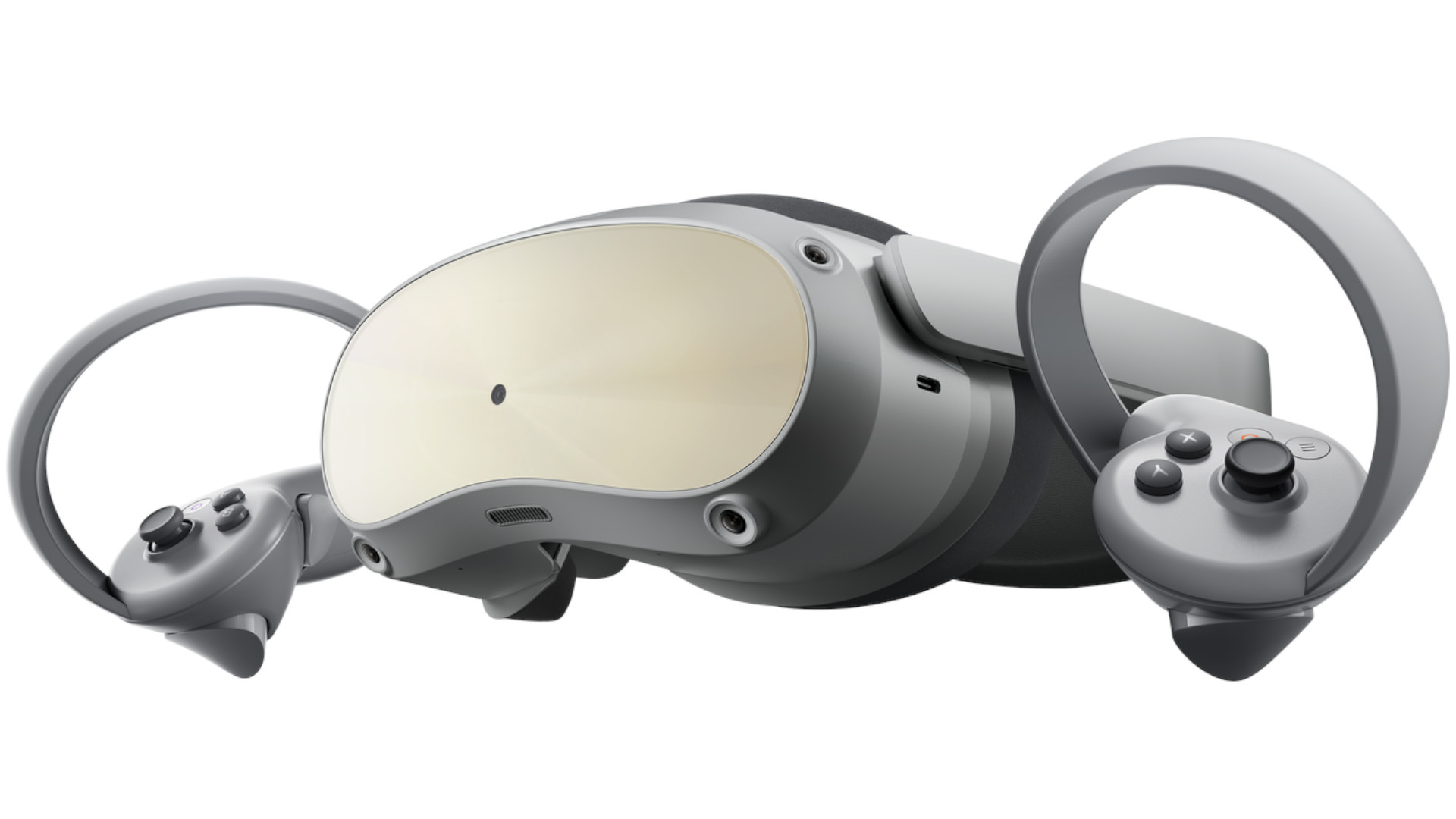
In terms of design, the Pico 4 Enterprise has the benefit of being significantly lighter than the Meta Quest Pro: 131g or 4.6 ounces. Our reviewer called the Quest Pro very "comfortable to wear for long periods of time," but some will find it too heavy compared to the Pico 4 Pro. The Quest Pro does, at least, beat the Quest 2 in this area (among many others).
Both headsets have a rear adjustment knob that lets you slide the strap out and then tighten it to your head. But the Quest Pro uses a halo-style strap with a second adjustment knob to calibrate how far away the lenses are from your face so only the forehead padding rests on your face. The Pico 4 Pro and Enterprise have a more traditional design where the double PU foam mask around the lenses presses directly into your face, and that will make it less comfortable over time.
You'll enjoy built-in stereo audio with either headset. We can only speak to the Quest Pro quality, which our reviewer praised for its "full range of sound" and "palpable bass." Meta also added two 3.5mm headphone jacks, so you'll need earphones that connect to two ports for them to work; it sells compatible earphones for $50, along with other Quest Pro accessories.
Get the latest news from Android Central, your trusted companion in the world of Android
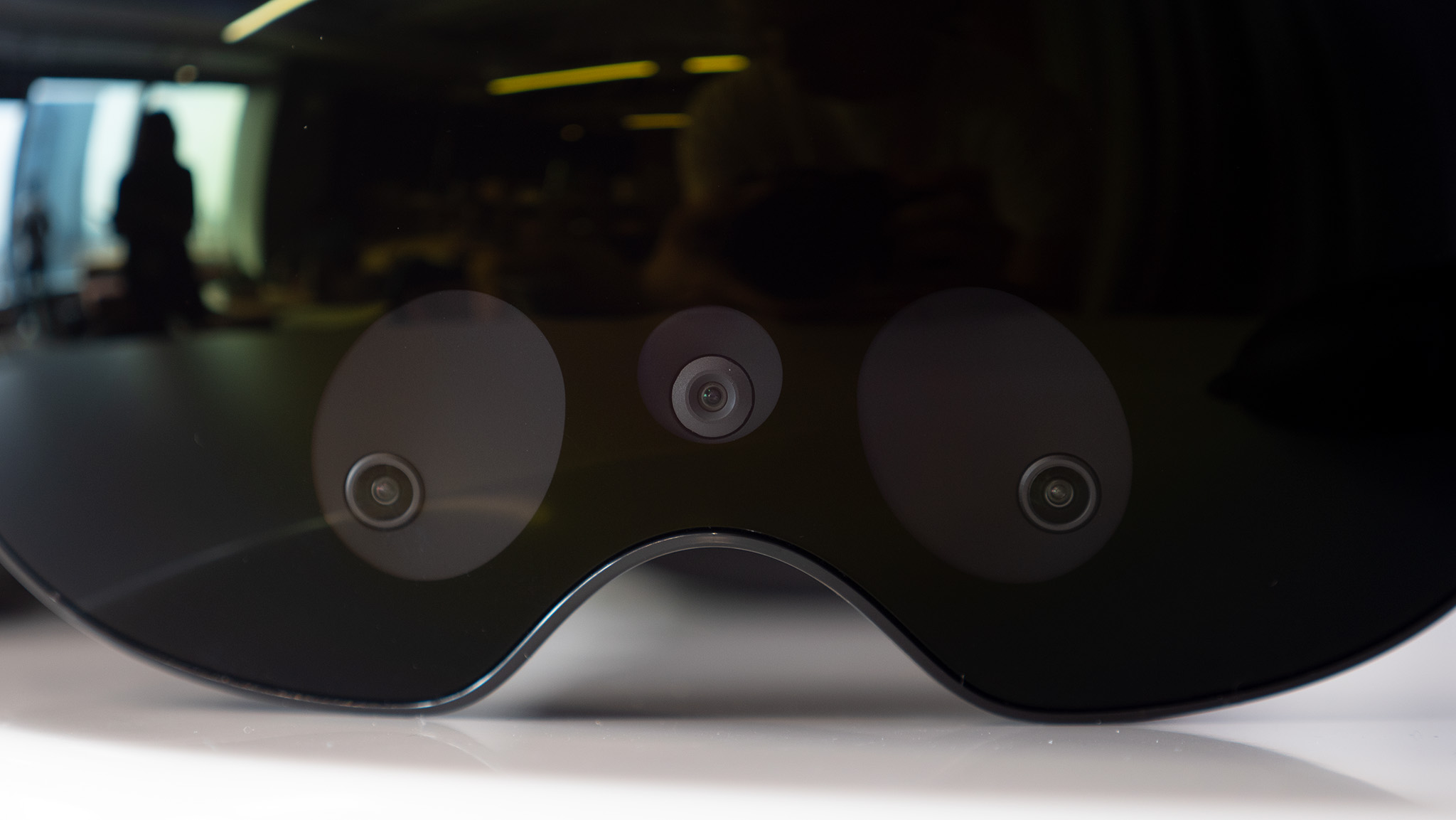
As for cameras, the Pico 4 Enterprise has three infrared cameras for face/eye tracking, while the Meta Quest Pro has five in total. It's difficult to compare how well the two perform, given the Pico 4 Enterprise isn't out yet, but Pico says it can track 52 facial points — but hasn't confirmed anything about foveated rendering. The Meta Quest Pro does support foveated rendering, and thus far, its facial tracking seems to be quite accurate.
As for external cameras, both devices have five, four for tracking and one for RGB color passthrough. The difference is that the Pico's fisheye camera, UploadVR's David Heaney tweeted that it, "isn't depth-correct" and gives you a headache if you try to use it for mixed-reality applications. There is a "night and day difference" in how the Quest Pro handles mixed reality.
Although we haven't tested the Pico 4, our reviewer did find that the Meta Quest Pro color passthrough is excellent, although you will notice the 24fps frame rate and muted colors compared to real life. It's a headset you can comfortably wear while walking around in your home or an office without tripping or getting nauseous — even if you'd look slightly ridiculous.
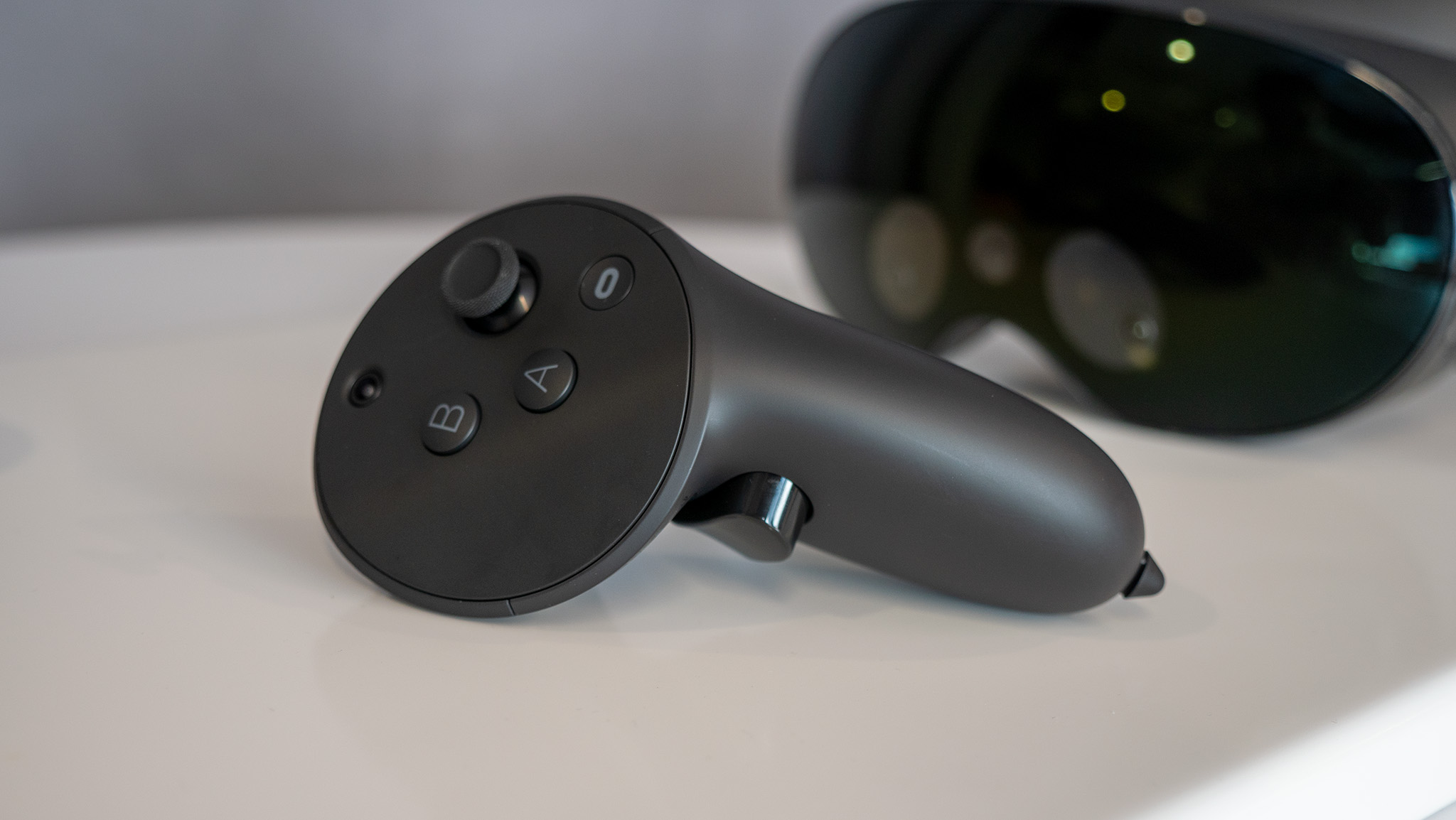
The Quest Pro also has three SLAM cameras and one Snapdragon 662 chip built into each Quest Touch Pro controller, so they convey their position to the Quest Pro without needing to be externally tracked. That makes them much more accurate than typical controllers with ring trackers like the ones used by the Pico 4 Pro; they have no dead zones where the headset cameras can't see them and aren't affected by poor lighting.
That being said, Pico did design its Pro controllers carefully with a "one-piece rotating arc column" and a design that "allows users to move their hands closer together with ease while offering added protection provided by hit detection and spatial awareness." Generally speaking, tracker rings can protect your hands from accidentally slamming into something, though this can also damage the controller itself.
In terms of performance, the Pico 4 Pro has the same Snapdragon XR2 chip found in older VR headsets like the Quest 2 and Pico 3, though its 8GB of RAM does provide a slight memory boost. The Meta Quest Pro has the Snapdragon XR2+ powered by 12GB of RAM. The redesigned chip has the same components but is physically larger, offering increased airflow and heat dissipation to compensate for faster memory.
Quest 2 games are faster on the Quest Pro, so we can assume that the Pico 4 Pro will have a decent boost as well if it supports foveated rendering with eye tracking.
Where the Meta Quest Pro struggles is with its battery life, as it has just a 2-hour estimated shelf life before you need to recharge it for two hours. The Pico 4 Enterprise does decently better with up to 3 hours per charge; we're not certain how quickly it can charge, but Pico does say it supports Qualcomm Quick Charge QC 3.0.
Meta Quest Pro vs. Pico 4 Pro: Software and purpose
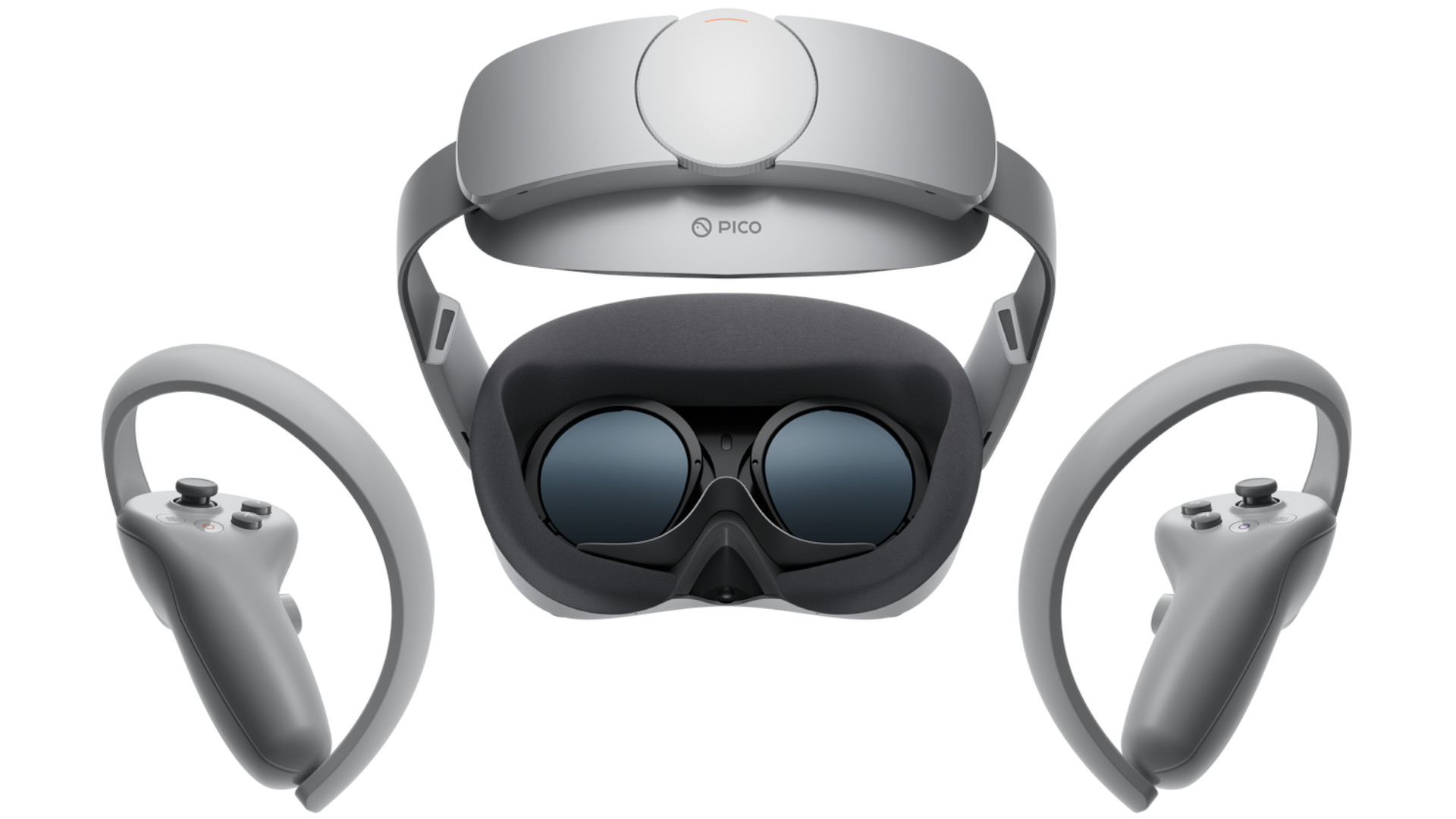
The Pico 4 Pro will have a wide range of gaming apps, as Pico has emphasized acquiring a larger library of mobile VR titles to try and compete with the Quest 2. As for the Pico 4 Enterprise, it'll have unique features that are, unsurprisingly, designed for commercial applications.
It'll have a kiosk mode that directly jumps users into a specific app, a live streaming mode to show other users what you're doing, and a sync mode for controlling playback across multiple Pico devices at once. There will also be remote device management, where someone can remotely control your headset to see what you're doing and help you solve a problem.
What we're not sure about is what will come with the Enterprise App Store, as enterprise devices aren't exactly our area of expertise.

With the Meta Quest Pro, it's much more of a "prosumer" device, meaning it has applications that most professionals will be familiar with, but it's meant to be bought for individual rather than collaborative work. You can meet with coworkers in Horizon Workrooms if your company buys a bunch of Quest Pros, but for now, you can just buy one for yourself if you need one.
Aside from the Quest Pro's decent launch lineup of work and mixed-reality experiences, Microsoft will bring Windows 365, Office apps, Teams, Azure, and other apps to the Pro throughout 2023. Graphic designers will be able to use Autodesk or Adobe's Substance 3D apps, while everyday office workers will collaborate with Adobe Acrobat.
Otherwise, you can very easily use a Bluetooth keyboard in headset while you work on virtual displays through the Oculus Browser, or else simply work on your own laptop with the Quest Pro synced to it. The improved passthrough on the Quest Pro gives it an edge for daily work that the Pico 4 Pro can't necessarily deliver.
Meta Quest Pro vs. Pico 4 Enterprise: Who are they for?

The Pico 4 Enterprise will launch in early December in select EMEA countries, Australia, and New Zealand, and is expected to come to North America as well with a $900 / €900 price tag. It beats the Meta Quest Pro in some areas, like its lightweight design, battery life, and pixels per inch, though it loses in many others.
Assuming it's available where you live, you could technically try to buy one and ignore the Enterprise applications to simply enjoy Pico 4 Pro perks — or buy the Pico 4 if you don't need face or eye tracking. But this is certainly a device that Pico wants to sell to businesses in bulk, and we have no indication that Pico will be able to partner with popular app makers like Microsoft for its own devices.
If you truly want a work-focused VR headset, the Meta Quest Pro is hands-down your best option in spite of its downsides and high price — though you may want to wait until more software comes to the device. Once it does, the Quest Pro's superior mixed-reality makes it the only headset that you'd want to wear for hours at a time.

With a revamped Snapdragon processor and more RAM, more cameras for face and eye tracking, better depth perception for mixed-reality passthrough, more accurate controller tracking, and more software applications, the Quest Pro is the better buy if you can afford it.

Michael is Android Central's resident expert on wearables and fitness. Before joining Android Central, he freelanced for years at Techradar, Wareable, Windows Central, and Digital Trends. Channeling his love of running, he established himself as an expert on fitness watches, testing and reviewing models from Garmin, Fitbit, Samsung, Apple, COROS, Polar, Amazfit, Suunto, and more.
